Summary: Technological advancement has shown unprecedented growth, and almost all businesses are headed towards digital transformations to gain a competitive edge. The proliferation of digital channels and touchpoints makes it taxing for businesses to aggregate data across locations. A digital experience platform solves the business problem by collecting and arranging data from touchpoints and channels in one personalized space. Let’s learn about digital experience platforms.
We undergo a digital transformation when we use new, fast, and rapidly changing digital technology to solve problems. And to reap the benefits of digital transformation, you need to initiate actual change in the organization – a change in the culture & practices of the organization. The process will be different for every organization. Yet the ultimate goal will be the creation of a digital experience platform. All businesses can benefit immensely by deploying a digital experience platform to deliver richer, connected, real-time, and personalized customer experiences across multiple touchpoints.
What is a Digital Experience Platform?
Digital Experience Platform (DXP) is a solution that allows for building meaningful applications that can be integrated and optimized across various digital touchpoints and backend systems. It is meant for multiple user audiences, allowing seamless interactions between them.
Gartner’s precise answer to what DXP is:
An integrated and cohesive piece of technology designed to enable the composition, management, delivery, and optimization of contextualized digital experiences across multi-experience customer journeys.
Prominent digital experience platform examples include — Kentico Xperience, Adobe, and Salesforce Lightning External Apps. In practical working, digital experience platform companies assist customers with well-thought-out, personalized digital experiences through these platforms while offering businesses an opportunity to enhance their performance.
Businesses can benefit immensely by deploying a DXP in contrast to the traditional horizontal platforms or content management systems (CMSs), delivering richer, connected, real-time, and more personalized customer experiences across multiple touchpoints.
A look at the following data can tell us so much about the significance of the digital experience platforms:
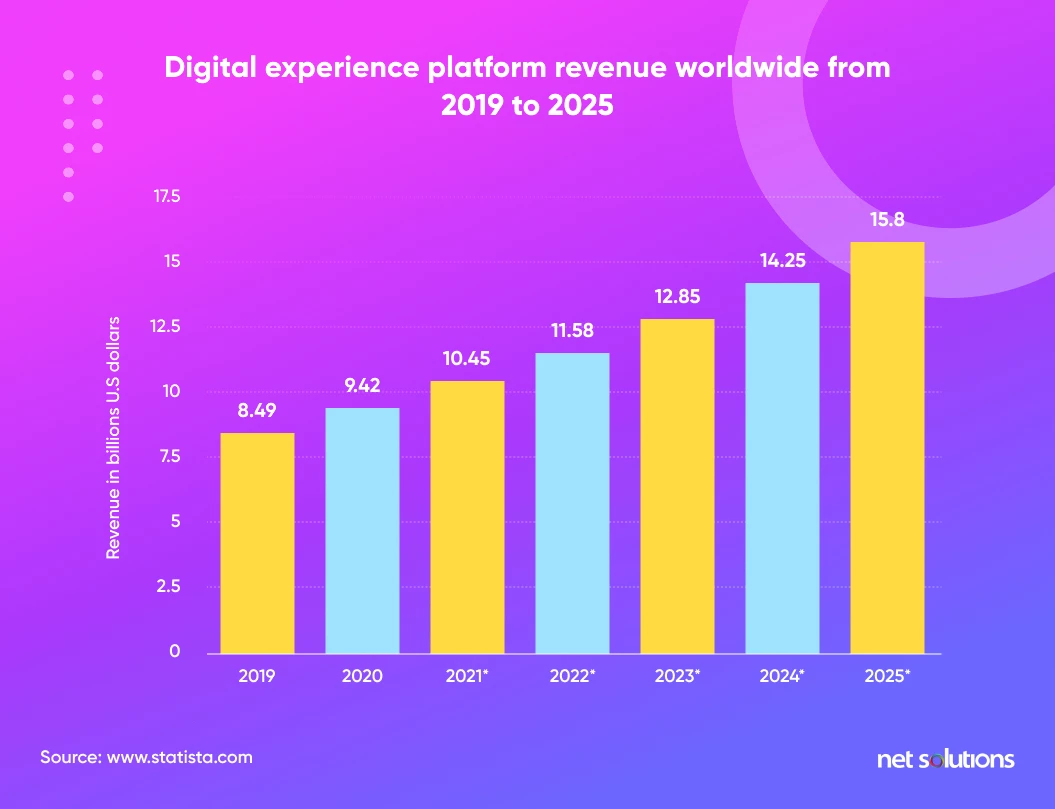
Evolution of Digital Experience Platforms
You must prioritize customers if you don’t want to lose your relevance and revenues. Your solutions need to offer personalized experiences. Digital Experience Platform is possible with the help of a Digital Experience Platform. For B2C and B2B worlds, relevance and customer experience have been the major factors.
Now the next generation of CMS turns into Web Experience Management systems (WEM). As this involves managing the all-around experience of the web user across various touchpoints, it gives organizations a new way to collect customer data, define personas, and create exceptional experiences.
WEM systems are stand-alone marketing tools that are difficult to connect to other systems. These systems are limited to data, profiling, and business logic, and the same realization leads to the Digital Experience Platform (DXP).
Being an open platform that integrates with other systems and departments easily, DXPs enable your business to present a genuinely personal experience. Simply put, a DXP is an improvised version of CMS and WEM systems and addresses its predecessors’ challenges.
Types of Digital Experience Platforms
Digital Experience platforms could be of two different types – open and closed. Open digital platforms convert other products of third-party vendors into a single unified system. This means you can combine some tools you are familiar with or already use with new technologies.
A closed digital experience platform comes with all the products built into it. Although it can integrate with other products, it works best within its existing product ecosystem. Suppose you prefer to work with a single vendor or don’t possess too many technology resources that can be integrated. In that case, you are better off with a closed digital experience platform. An open model offers freedom and flexibility.
Components of Digital Experience Platforms
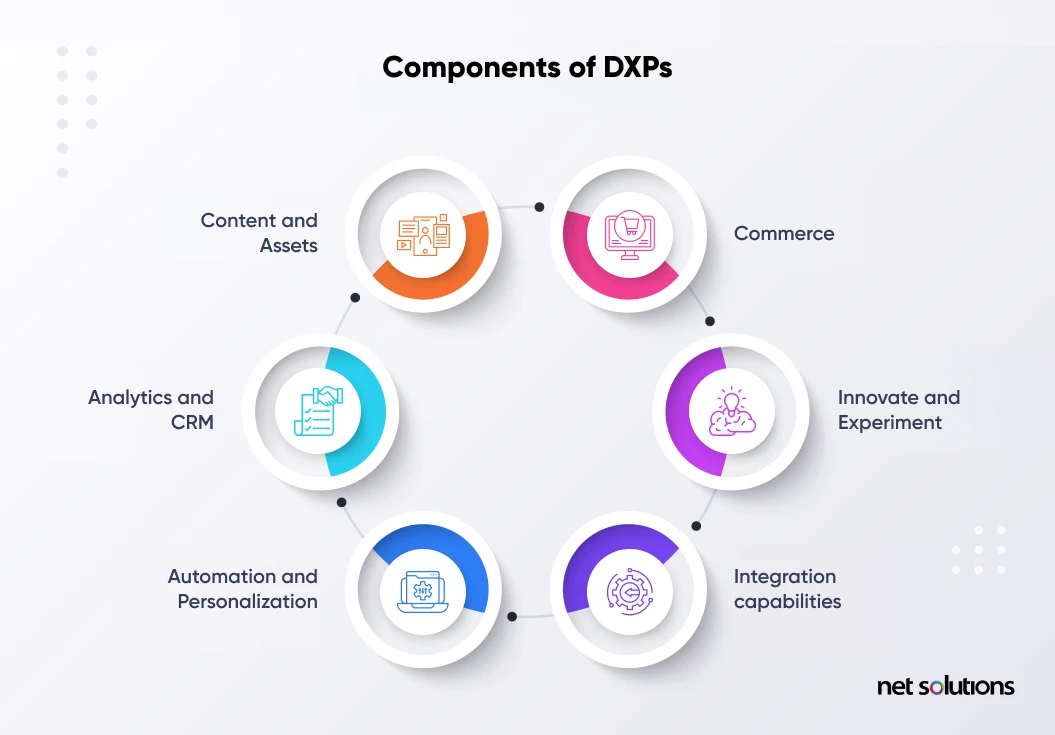
While the idea of digital experience platforms or DXPs is relatively new, there are some common features or components related to the following:
Content and Assets
This is the base, the first of the aspects that a digital experience platform takes into its aegis. Every DXP will work to manage content – have some CMS capacity & capability, in other words. It becomes a central point for the content, which can then be used on the website, blog, mobile app, etc. The content workflow, authoring, indexing, presentation, security & delivery are taken care of. Besides content, a DXP also takes care of the assets used – videos, pdfs, audio files, etc.
Analytics and CRM
Where there is content presentation, there will be analytics. Content delivery calls for a study of user behavior too. Data analysis and intelligent platforms provide real-time review and insights into behavior and recommend optimizing the experience from that Content. Gartner has also suggested that digital experience analysis is essential for tracking and improving customer experiences. Since it monitors and analyses customer data, a DXP has customer relationship management capacity & capability.
Automation and Personalization
A DXP can provide a personalized customer experience because of the automation it introduces. This helps marketers understand more & strategize for plans. The customer experience personalization is a huge benefit of having a DXP.
Commerce
Digital experience platforms help companies ease out their transactions in the ecommerce sphere. A DXP would play a role in setting up the digital store, payment gateways, and the order process.
Innovate and Experiment
Not only can you innovate on new analytics, but you could use the facility to test content so that you’re able to provide optimized experiences and test what the result of new changes can be. The whole idea is to be able to make data-driven decisions for a better business strategy. Change management becomes more comfortable with a DXP.
Integration capabilities
There are flexible APIs for content delivery, authoring, decisions, and administration which get easily integrated with optimal solutions. Having an open architecture also helps. Integration with APIs is a support because it is tough for a single DXP to manage the entire process independently.
How do you choose a Digital Experience Platform?

Choosing a digital experience platform means having clarity on the following:
Goal setting
Align your requirements with your goals. Let the features and functionality be as per the company’s requirements. Set your goals realistically, and then don’t compromise on the platform you need or the particular features you are looking at. Your goals will tell you the functional fit. You could be a retailer showcasing products, offers, campaigns, etc. Or you could be a B2B enterprise dealing with enterprise customers and partners. In this case, you need a varied IT integration.
Validation
Make sure you check out references or case studies from the particular vendor – along with it, also take analysis from leading digital analyst sources (Gartner, for example). Rankings of these sources matters when it comes to analyzing the technology vendors.
Research
This is important to evaluate the vendors that are providing digital experience platforms. Integration capabilities are also vital and need to be kept under consideration. To choose any software system, you need to see which other software it aligns well with, what the connectors are, the documentation, and the community.
Technology
Technology will be a significant consideration while listing the possible platforms. Products could be based on Java, Microsoft, or the PHP tech stack. When deciding the product you choose, remember that most products will support the above in front-end development – however, what happens at the product back-end levels? Your comfort with these technologies can affect how you work. Plus, when you choose a DXP the included capabilities need to be well integrated and not seem like a disconnected system.
Finance
Besides the implementation costs, licensing, and development costs, there are also operational costs. You need to assess the value for money and see if the pricing criteria are transparent and clear. Look for flexibility in the pricing system, too—costs of features, capabilities, and use case matter.
7 Key Benefits of Digital Experience Platforms
Here are the seven significant benefits of digital experience platforms that will highlight the importance of having one.
1. Touchpoint Optimization for Rich End-User Experience
With time, reaching out to potential customers has become easier and more convenient for businesses. Whether mobile apps, emails, chatbots, websites, social media, or face-to-face interactions, DXP technology saves the day.
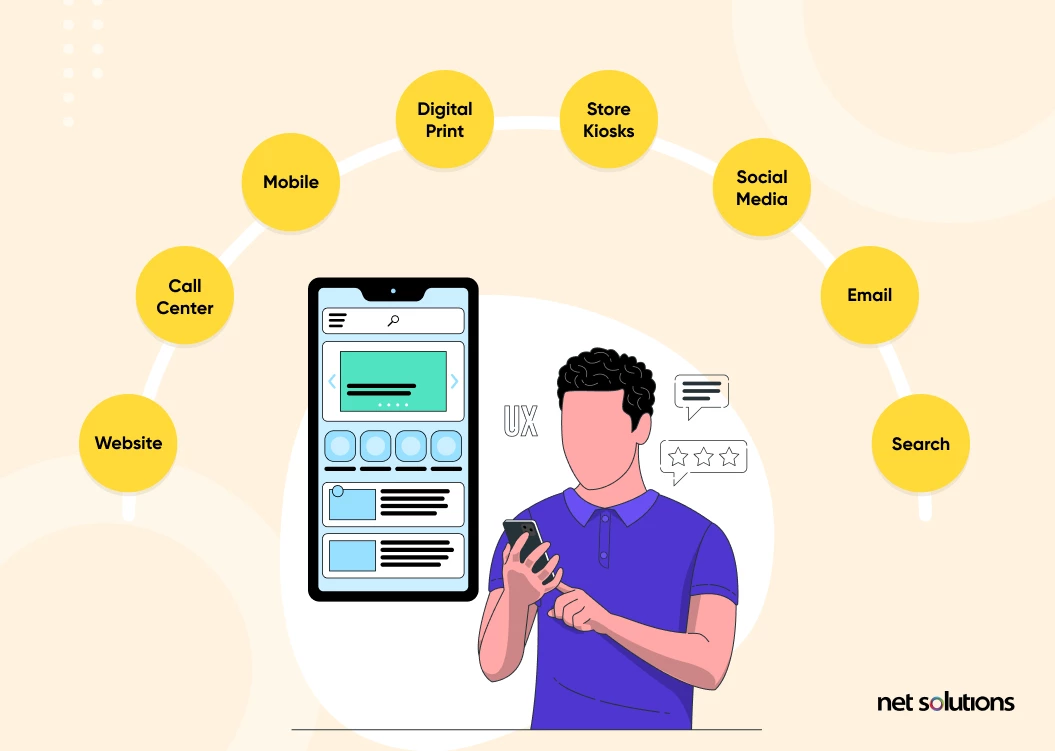
With a digital experience platform, customization across every touchpoint becomes readily achievable. DXPs deploy the power of trend analysis and data analytics to study customer behavior at every critical touchpoint. This further helps in construing the customer expectations most authentically.
Once a user’s behavior looks predictable, efforts are made toward eliminating the customer’s frustrations. This can be done by delivering content that is — consistent, logical, and answers the audience’s queries.
2. DXP Makes for a Profitable Investment Altogether
Traditionally, businesses deploy different digital software products for various operations. For instance, portals help in content aggregation, analytics help in tracking, content management systems (CMS) help create and manage digital content, and campaign management help oversee various digital marketing campaigns.
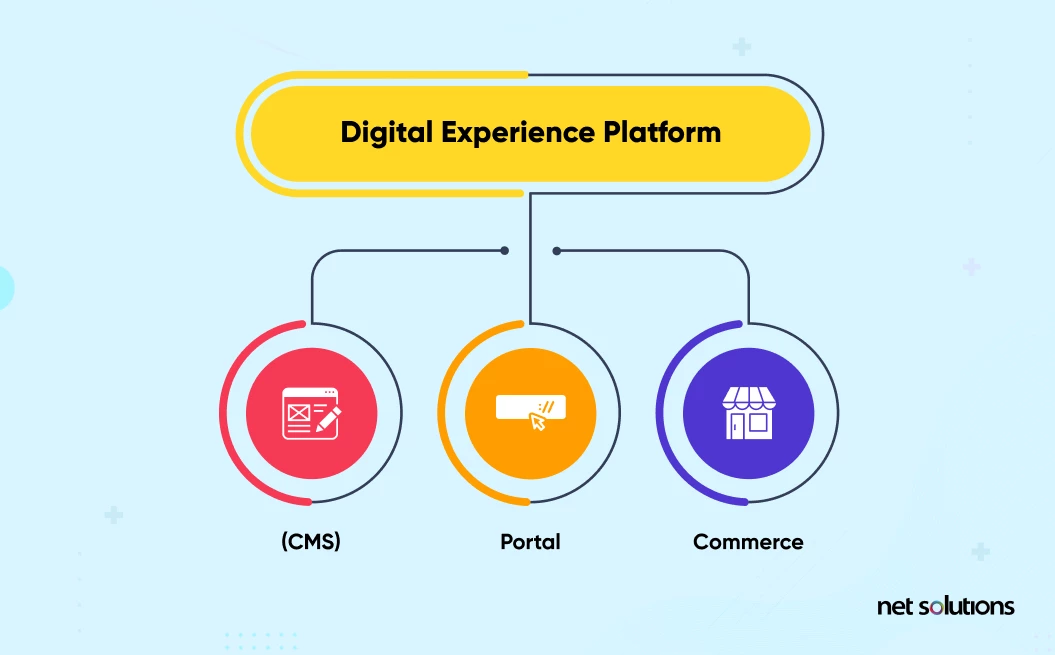
Not only was it tricky to manage every platform separately, but it was not that budget-friendly too. With the introduction of digital experience platforms, a one-stop solution got introduced. DXP smoothly merges all the technologies into a single platform that is easy to manage.
You can say that it offers an integrated approach that paves the way toward building responsive applications. And, of course, when enterprises invest in this one-platform-for-all DXP solution, expenses also take a downturn.
3. AI Integration Helps Reduce Time-to-Market
In the present scenario, getting a more in-depth insight into the customer’s mindset and related data is indispensable. To be specific, accessing customers’ contact information, preferences, social media interactions, browsing time, purchase history, or even communication data – to draw actionable insights adds value to the business.
Artificial Intelligence, when embedded into DXPs, makes the job easy. Specifically, AI can help locate critical information concealed within large chunks of customer-related data. This further enables accessing information effortlessly, whenever required.
So we can say that a digital experience platform allows us to work on consistent, accurate, and updated information on the go. When every piece of critical information is readily available, DevOps comes forward to improve the time to market through iterative delivery.
4. Business Productivity Gets a Significant Push
Getting repeat customers is the ultimate motive of any business. To achieve the said motive, it becomes essential to accommodate digital experience management. It acts as a magnet that attracts content and commerce elements to offer a desirable customer experience.
To top it all off, DXP is a flexible system that integrates with existing business platforms through APIs (Application Programming Interfaces). The best part comes here — you can introduce new services to the platform that leads to innovation down the lane.
What does this mean for your business? The answer is simple – An increase in sales, which, in turn, pushes business productivity. In the end, you would be surprised to know how a single change of plan can become a perfect reason to rejoice. The only catch is that your team has the technical skills to implement a full DXP setup.
5. 360 Degree View of Customer Data & Activities
Digital experience platforms do the needful by offering a dashboard-like view to business owners. The integrated dashboard automatically represents data regarding customer data & its related activities recorded on the digital interface. Isn’t this what a business wants?
All the gathered stats and facts further aid in driving major business decisions that have a low failure probability. It shows how a DXP solution is a must-have in this highly competitive business space.
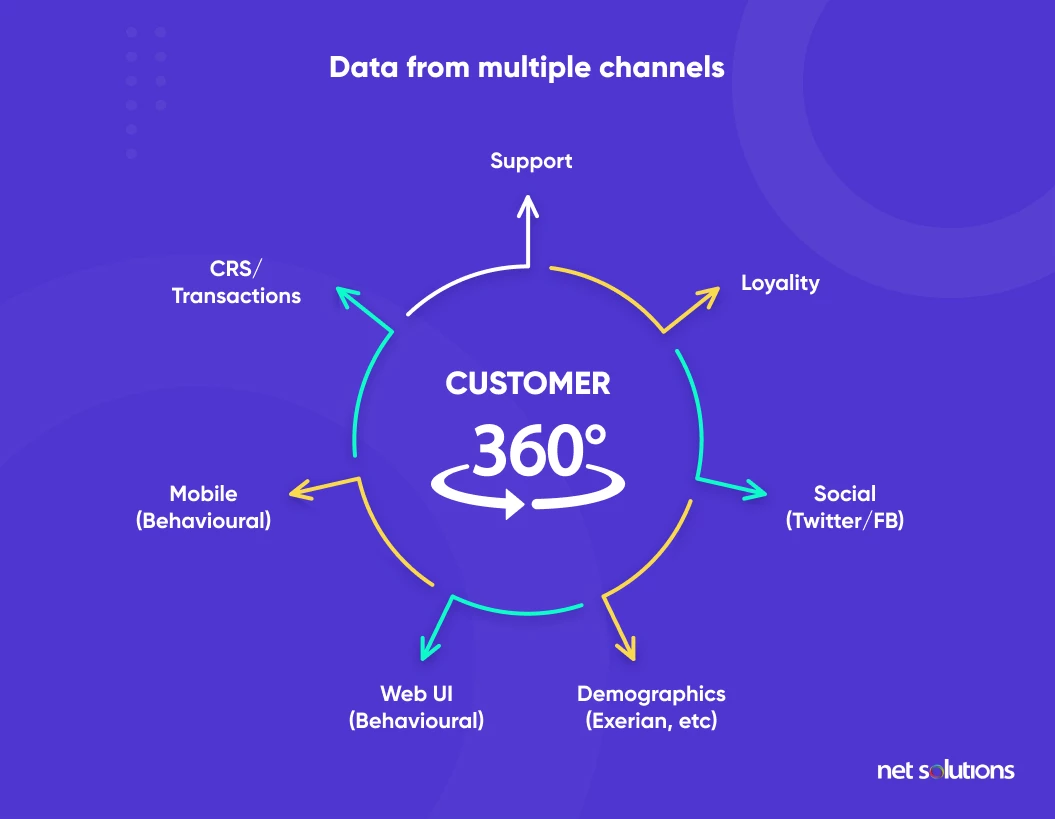
This single interface is a hub of user-related data and can help predict future trends and provide accurate recommendations. Thus, a 360-degree view of the customers is one of the most actionable benefits of DXPs that, in turn, lead to better customer engagement, ensuring higher retention and increased customer loyalty.
6. Digital Transformation is Achievable
Being labeled as a digitally proficient business is the need of the hour. Digital experience platforms offer the latest technologies, modular components, touch-point information, and decision tools to trigger the digital transformation wave.
Digital transformation means managing the front-end user experience and back-end systems. With the help of digital experience platforms, the front-end and back-ends work cohesively to act as a single unit. And this single unit then works to gather customer insights to offer a customized overall experience.
Digital Experience Platform architecture also significantly drives transformation by embracing modern architectural style microservices. The microservices architecture aids in the continuous plus successful deployment of large-sized & complex applications, thus allowing evolution through technology integrations.
7. Increased Focus on Eliminating Customer Pain-Points
It is a journey from the time a user enters your digital platform/s to their conversion into a loyal customer. When framing an unbeatable marketing strategy, tracking customer interactions at every stage becomes standard practice.
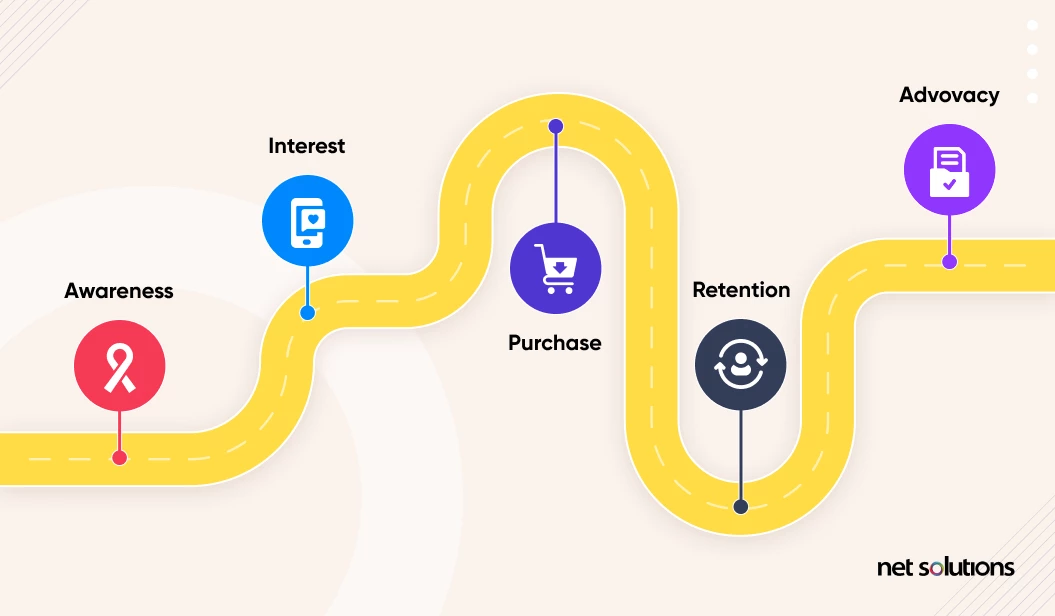
When you have a DXP platform, an enterprise gains control over analyzing all the channels customers use to interact with the brand. From a marketing perspective, this helps eliminate the potential pain points of the customers as measurable data becomes available.
This comprehensive customer data will help determine the user-related problems related to digital platform interactions and frame a fool-proof customer journey mapping strategy. In the end, you can expect to add customers to your business journey that will stick to you in the future.
A digital experience platform enables you to produce a variety of user-facing experiences that are personalized for your users. It empowers your business to deliver exceptional experiences using the correct data at the right time, customized to the channel and touchpoint the user is engaging.
A digital experience platform will help you integrate customer data, user experience, and business-oriented data into one place. Invest in DXPs, and witness how seamlessly your business achieves its short-term and long-term goals.
Top 9 Digital Experience Platforms
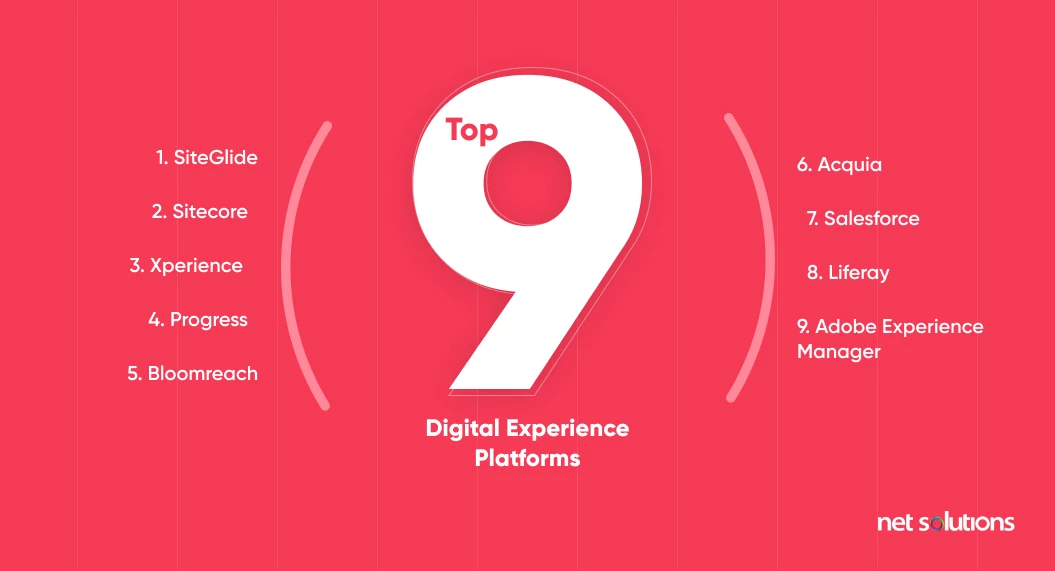
Digital experience platforms allow you to monitor and shape content as per meaningful insights gained to provide a rich experience to customers. They are meaningful amalgamations of capabilities of varied applications to provide more relevant digital experiences. Besides, some tools offer realistic insights that can further help improve customer experience.
- SiteGlide – offers a highly data-driven, boundless digital experience. Data can be leveraged to create different websites, market portals, and membership sites. Complete data and code control help users meet the project brief inspite of its complexities. SiteGlide facilitates easy UI and takes care of the basics like maintenance, security, and improvements.
- Sitecore – integrates easily with the tech stack and provides digital marketing capabilities. Valuable data and insights help make informed decisions. It helps to increase engagement and conversions and speed up the time to market.
- Xperience – provides excellent customer experience with the help of impactful, next-gen content and site management. This especially comes in handy for eCommerce sites. You can leverage automation, personalization, and email marketing for a customer-friendly experience.
- Progress – comes across as a platform that lowers overhead costs. It effectively helps manage brand presence, establish a seamless digital experience and improve operational efficiency.
- Bloomreach – provides rich content and creates personalized experiences. Customized, consistent and engaging experiences through the digital touchpoints are a benefit here.
- Acquia – built with particular consideration for non-technical users. It is an open DXP and has built-in monitoring and performance tools. Acquia has the capabilities to design, build, and optimize websites, apps, and many other digital experiences. The usability factor is high, so larger teams can also use it.
- Salesforce – is known to provide a seamless connection between the customer experience and data. Tailored experiences for each audience and target profile make personalized data easier. Plus, all design is mobile optimized and responsive, with convenient UX.
- Liferay – is one of the flexible DXPs that can let you work on your current business processes and technologies. It makes it possible to build customized systems with personalized experiences.
- Adobe Experience Manager – a feature-rich option that offers a personalized content-laden digital experience with digital asset management and a content management system. It provides both automation and monitoring.
Frequently Asked Questions
When you monitor people’s interactions with an organization’s digital channels, it is called digital experience management. These digital “channels” could be websites, social media, mobile apps, etc. Your customers’ experiences with the organization are seamlessly integrated to convey the desired message. Moreover, it becomes easier to identify potential problems, address them accordingly, and improve.
Whatever the touchpoint of customers with your brand, they expect a seamless experience. A consistent digital experience across all channels helps a business make strategic decisions with concrete ideas, not guesstimates. It leads to better profits, an increase in revenue, and a broader, more satisfied customer base.
Whether the people in these teams are new or old, specific roles are needed to operate digital experience platforms. You will need digital analysts, digital content marketers, a digital customer experience leader, and some leadership commitment required for the digital experience team to be successful. UX designers are also part of the information architecture, design, and performance teams.
For one, the overall business agility is enhanced with objective insights and analyses improved. Productivity increases, content experiences are enhanced, and one would expect a lower cost. Plus, flexible multi-space content equipped to deal with future demands is a huge reflection of an excellent digital experience platform.


